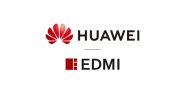Fredrik Akerlind, VP of Sales of Telenor Connexion, Telenor's M2M arm shared his take on the recently concluded Consumer Electronics Show (CES) 2015 in Las Vegas. The CES saw increased participation by major telecom operators as the M2M/Internet-of-Things (IoT) market continues to drive new business verticals for service providers. Smart meters, connected car and smart home functionalities are seeing mobile operators beefing up their M2M platforms including their cloud and big data capabilities to offer customers, especially enterprise customers enhanced range of M2M services that are not only bundled with connectivity and content, but are also integrated with their customers' cloud and hence their other business processes. Given the huge opportunities that abound in the connected world, where more than 8.1 billion devices are expected to be connected by 2018, mobile operators are ensuring that they are staying ahead of the latest developments in the M2M/IoT market. Fredrik summed up some of the key highlights of the event in the following points:
#1 Connected, self-driving cars in the front seat at CES
Five years ago, there was barely any automotive presence at CES, but this year CES showed cars that can park themselves, gesture based systems to eliminate driver distraction and cycle helmets that can communicate to avoid collisions. Mercedes-Benz presented its futuristic-looking F015 Luxury in Motion concept car, which looked like it was straight from a science fiction movie. Unlike other self-driving cars, the F015 has a steering wheel so drivers can reclaim control. Audi had a car that can arrive to pick up its driver at the touch of a button on a smartwatch, while Japanese carmaker Nissan announced it was teaming up with NASA to work on the technology. BMW showed off a self-parking car and new touch-screen and gesture controls for its iDrive interface, while Volkswagen demoed a gesture-based system through its Golf R Touch concept car.
The automotive industry has been connected for a long time, but now we are beginning to see examples of exciting new solutions. For example, the cooperation between Volvo, Ericsson and helmet manufacturer POC who together have developed a bicycle helmet that communicates with the cars to avoid collisions. The driver will be alerted to a nearby cyclist through a heads-up display alert, even if the cyclist happens to be in a blind spot. The cyclist will be warned via a helmet-mounted alert light.
# 2 An unhealthy number of health wearables
Wearables, the darling of CES 2014, is still a hot topic with a massive number of healthcare companies trying to get consumers to measure their steps, their sleep, caloric intake and any other unit that might be seen as a measure of "health".
One of the most talked about gadgets is Belty, a motorized “smart belt” from Paris-based startup Emiota. The belt constricts and relaxes itself based on whether you’re sitting or standing. It will even send a warning to your smartphone when it thinks you’re getting lazy.
But these gadgets are not for humans only. WonderWoof is an app and device that tracks a dog’s training and health. Intel showed off an incredible computer called Curie that’s the size of a button and can turn ordinary clothes into wearables.
# 3 Smart textiles
Speaking of clothing, the latest fitness trackers can also be woven directly into shirts, shorts, socks and pants, meaning clunky wristbands might soon be a thing of the past. With sensors being placed precisely where they need to be, hidden and flexible, smart textiles can solve some of the problems seen by wearables. How about smart socks that not only measures your jogging rhythm, but also warns if you land wrong on the sole of the foot to avoid damage, a shirt for tracking tennis performance or a pair of cycling shorts for recording rides? Another cool item was The ReST bed, featuring a proprietary smart fabric and sensors to track your sleep habits, and it uses that data to make sure the bed stays comfortable as you toss and turn at night.
# 4 Drones
The halls of the CES were buzzing with drones. They included the Nixie, a wearable drone that launches off your wrist to take your selfie. There were flying drones to carry loads, to fly into tight spaces, to provide lighting and just as toys. There was also “follow me” technology in some drones, so they can track and film anyone wearing a device on their wrist.
# 5 Robotics
Standard non-flying robots weren’t left out of the CES party. Droplet, a robotic sprinkler, understands plants and knows how much water to give them while Budgee, a robot that can accompany you as you shop, so you don’t have to use a shopping cart or basket and keep both hands free. Exoskeleton is another device that helps people to carry heavy loads, but even more impressive, it could enable paralysed people to walk again. Toshiba takes it a step further, showing off a robot that is eerily similar to a human. She/it even sang “Country Roads” slightly out of tune with a Japanese accent.
# 6 Baby’s best
Another impressive connected device that will actually better the lives of people, specifically premature babies and their mothers is BabyBe. The cradle or air sack mimics the heartbeat and chest movement of the mother, giving preterm babies the chance to experience their mother´s presence even when confined to an incubator. Sensors in a control unit that the mother holds against her chest are wirelessly transmitted to the base station where it fills and empties the bladders in the cradle rhythmically. The base station can also record the data and play it back at a later date if the mother isn't around to share her heartbeat in real time. The idea is that the movement actually soothes the child and allows them to heal and develop faster. Heartwarming!
Other baby items on show were the Bluetooth-enabled pacifier from BlueMaestro. The smart pacifier doubles as a thermometer and broadcasts the child's temperature to the parents’ smartphone, even tracking if the little one has a cold. And the creators of the much hyped smart fork Hapifork are back with a smart baby bottle. The Baby Glgl monitors how much milk your baby is drinking and tells you the optimal angle to feed your child to prevent gas or colic.
# 7 Smart homes, big brands
There are a ton of smart home tech accessories being showcased at CES that are designed to make your home life easier through connectivity. Looking at the big brands we see Bosch helping homeowners take complete control of their heating, cooling and water temperatures by using an app for smartphones and tablets. Another application that makes lives easier is Home Connect, which acts as a control center for the family of Bosch-related brand appliances like the oven, dishwasher or refrigerator, and to access a host of services while homeowners are away.
Also GE has a wide range of connected appliances on show. Already on the market are ovens controlled via an app where users can set timers, check cooking status, receive updates when food is ready, and turn off the oven from a distance. Over the course of 2015 GE will also bring its connected laundry washer and dryer, fridge and dishwasher to the market. The connected laundry and washer keeps users from leaving their laundry in for too long, providing a warning when wrinkles are going to set in on clothes. The app also shows the progress of the wash, how much time is left, and keeps track of how much detergent is left. The connected fridge has functions like receiving reminders to change the water filter or alerts when the door has been left open. The connected dishwasher alerts a user if there is anything wrong with the wash and monitors performance to ensure that the dishes always come out clean.




















